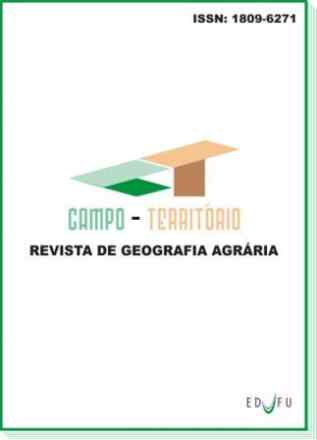O AGROHIDRONEGÓCIO NO CENTRO DAS DISPUTAS TERRITORIAIS E DE CLASSE NO BRASIL DO SÉCULO XXI
Campo-território
O AGROHIDRONEGÓCIO NO CENTRO DAS DISPUTAS TERRITORIAIS E DE CLASSE NO BRASIL DO SÉCULO XXI
Autor Correspondente: ANTONIO THOMAZ JÚNIOR | [email protected]
Palavras-chave: agrohidronegócio, disputas territoriais, controle do trabalho, luta de classes, conflito
Resumos Cadastrados
Resumo Português:
A expansão da agropecuária capitalista, no Brasil, referenciada no modelo
agroexportador, se consolida territorialmente no que denominamos de PolÃgono do
Agrohidronegócio, a contar com o Oeste de São Paulo, Leste do Mato Grosso do Sul,
Noroeste do Paraná, Triângulo Mineiro e Sul-Sudoeste de Goiás. Está-se diante de 80%
das plantações de cana-de-açúcar, também de concentração das plantas
agroprocessadoras, de produção de álcool e de açúcar do paÃs, bem como 30% das terras
com soja e onde se registra os maiores avanços em termos de área com plantações de
eucaliptos. A partir dos resultados das pesquisas enfatizamos o conteúdo dos conflitos
territoriais por meio do qual temos o fio condutor das ações dos sujeitos envolvidos nesse
cenário de expansão e consolidação do agrohidronegócio. Isto é, as ações que antepõem
trabalhadores e capital, as fissuras intercapital reveladas pela necessidade de terras planas,
férteis e com disponibilidade hÃdrica, portanto aptas à mecanização, e entre os próprios
trabalhadores, mediante as ocupações de terra e a ações no âmbito da luta pela terra.
Estamos diante de exemplos significativos das disputas territoriais e de classe no Brasil no
século XXI, ainda não visÃveis para a maioria da sociedade, ofuscada, pois, pelas
campanhas de marketing milionárias do capital e/ou afinada ao projeto destrutivo de
desenvolvimento da agricultura com base no modelo das grandes áreas monoculturas para
exportação, em detrimento da produção de alimentos para o consumo humano, em
pequenas unidades familiares.
Resumo Inglês:
The expansion of the capitalist agriculture and stock raising in Brasil, which follows the
agriculture exporting model, is territorially consolidated by the so called Agricultural
Business Polygon that includes western Sao Paulo, eastern Mato Grosso do Sul,
northwestern Parana, Mineiro Triangle and southern and southeastern Goiás. This land
represents 80% of the sugar cane plantations, concentration of the agricultural
processing plants, alcohol and sugar production in the country, as well as 30% of soya
bean plantations and it is where major advances can be seen in relation to planting
eucalyptus. After analyzing the research findings, we emphasize the content of the
territorial conflicts through which we find the conducting wire of the actions of the
subjects involved in the expansion scenario and the consolidation of the
hydroagricultural business. That is, the actions that place workers and capital ahead, the
intercapital splits revealed by the need of plain and fertile land with water supply that
enables mechanization, and among the workers, through land occupation and the actions
within the ambit of the struggle for land. These are significant examples of territorial
and class disputes in Brazil in the twenty first century, though they are not yet perceived
by most society that lives whether overwhelmed by exhaustive and expensive marketing
campaigns of the capital or harmonized with the destructive project of developing
agriculture that follows the model of big monocultural areas designated to exportation.
All this causes a serious hindrance to small family units that produce food for human
consumption.

